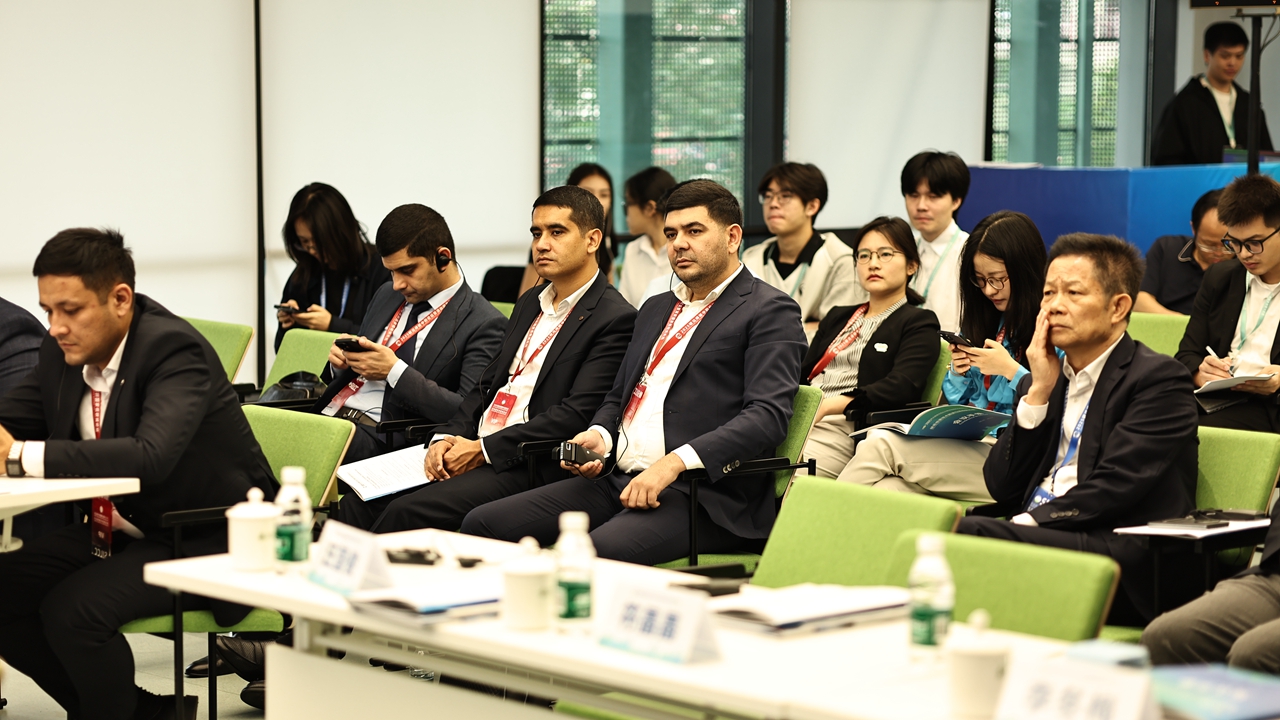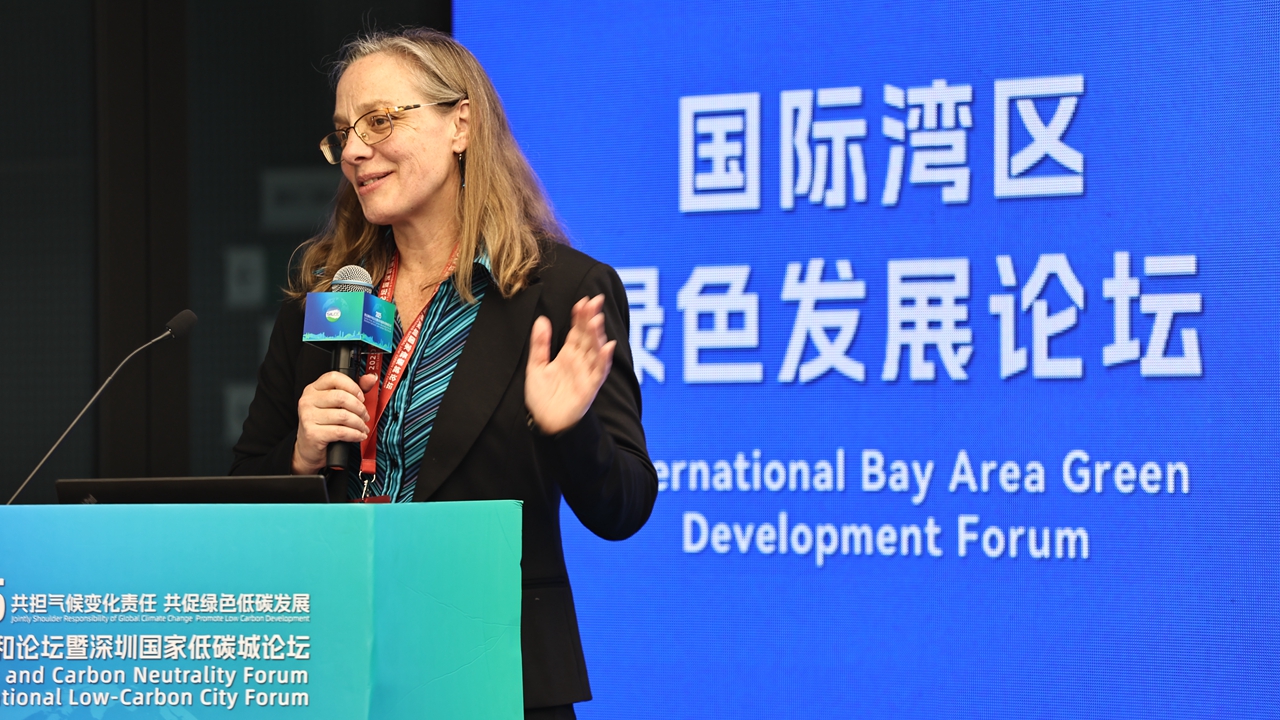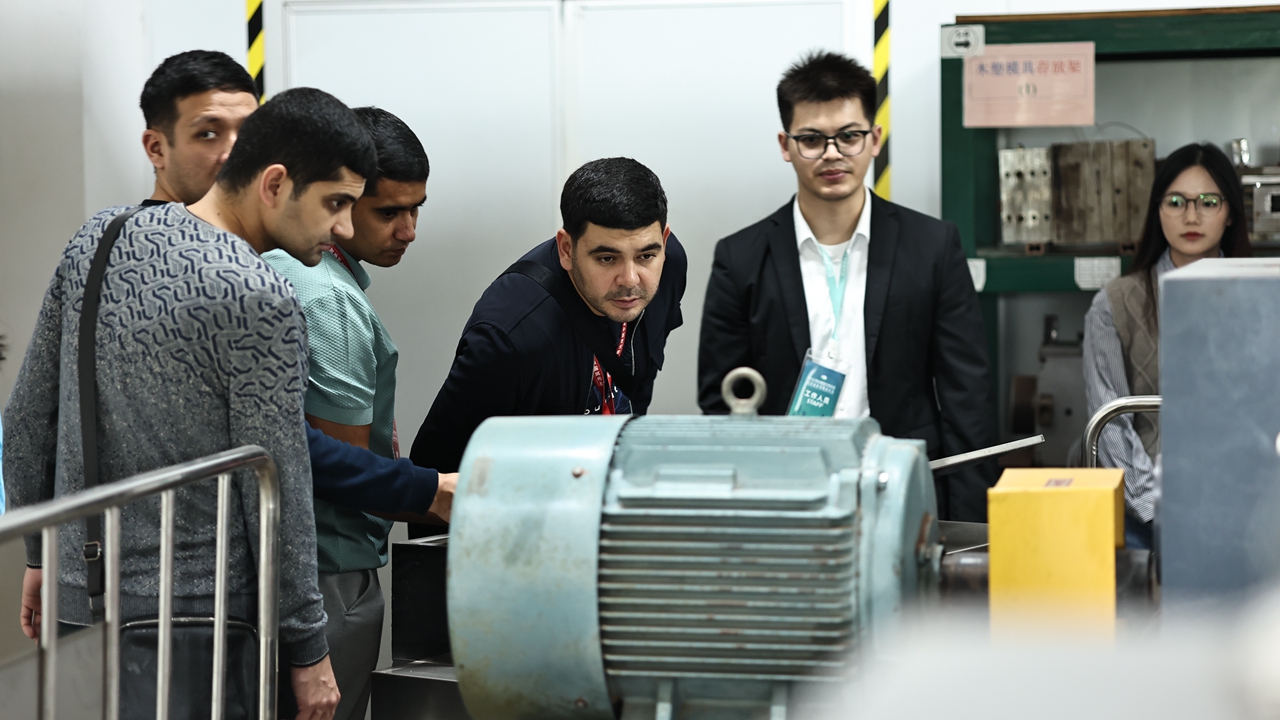The two-day 2025 Carbon Peak and Carbon Neutrality Forum and Shenzhen National Low-Carbon City Forum concluded Oct. 29 at Shenzhen International Low-Carbon City in Longgang District.
Experts and scholars from China and abroad gathered under the theme “AI Empowering Urban Green Development,” exploring new pathways for the integration of artificial intelligence (AI) and green, low-carbon growth.
Driving green growth through collective innovation
Marking the fifth anniversary of China’s “dual carbon” goals, the forum — now in its 13th edition — has evolved into a key national and international platform for sharing best practices in green development.

Attendees listen to a speech during the Green Low-Carbon Technology Roadshow and Project Matchmaking Session on Oct. 29. Photos by Liu Xudong
At the opening ceremony, Tang Guangfu, director of Huairou Laboratory, outlined priorities for building a new energy system — expanding wind and solar power, advancing flexible coal-fired power and carbon capture, developing hydrogen energy, and innovating in power grid and storage technologies.
Cheng Huiming, director of the Institute for Carbon Neutrality at the Shenzhen Institute of Advanced Technology, emphasized the importance of urban carbon neutrality, urging progress in renewable energy utilization, low-carbon industrial processes, green buildings, and sustainable transport.
From a global perspective, Tatiana Schmollack-Tarasova, managing director of the British Standards Institution (BSI) China, highlighted the role of international standards in shaping credible net-zero pathways and guiding Chinese enterprises to align with global sustainability rules.
During a high-level dialogue, Riccardo Mesiano, deputy head of the East and Northeast Asia Office of the U.N. Economic and Social Commission for Asia and the Pacific (ESCAP), proposed three regional strategies:
1. Establishing an Asia-Pacific Green Data Sharing Mechanism to break down national data silos;
2. Promoting mutual recognition of green technology standards through a regional certification network;
3. Creating subregional innovation centers for joint R&D and knowledge transfer.
Experts at the “AI Empowering Energy Transition Forum” noted that AI is advancing toward multi-modal, collaborative, and high-trust models that could reshape the energy industry. They stressed that integrating AI into real-world applications — from grid optimization to industrial energy management — will be crucial to achieving deep decarbonization and building an intelligent, self-evolving green ecosystem.
Demonstrating scalable green solutions
As a long-standing advocate of sustainable development, the forum has become a barometer for global low-carbon innovation. A series of landmark reports released during the forum underscored its role as a “demonstration window.”

Laura Van Wie McGrory, an expert from the World Resources Institute, speaks at the International Bay Area Green and Low-Carbon Development Forum on Oct. 29.
The 2025 Shenzhen Green and Low-Carbon Development White Paper presented progress across four key areas — carbon reduction, pollution control, ecosystem expansion, and sustainable growth — featuring 100 exemplary case studies to inspire other cities. The white paper outlined Shenzhen’s vision for a green planning, design, investment, production, consumption, and lifestyle system, aiming to build a model city for harmonious coexistence between humans and nature.
Other major releases included:
The Guangdong-Hong Kong-Macao Greater Bay Area Carbon Footprint Label and Certification Report and the White Paper on Carbon Footprints of Electrochemical Energy Storage, signaling a step forward in regional cooperation on green trade and emissions reduction.
The Shenzhen Carbon Inclusive Methodology for second-hand electronics and carpooling, encouraging citizens and small businesses to quantify, trade, and benefit from their carbon reductions.
The Shenzhen Safe, Energy-Saving, and Environmental Protection Industry Cluster Report (2025), ranking Shenzhen third nationwide in competitiveness, highlighting its growing ecosystem of listed companies, unicorns, and specialized “little giant” enterprises.
Ten projects — including the Lianhua Hill Supercharging Station and Urban Micro-Agriculture Zero-Carbon Project — were named demonstration bases. Twelve companies, such as BTR New Material Group and Mindray, were recognized as 2025 ESG Practice Pioneers for their leadership in corporate sustainability.
Advancing AI-green synergy
This year’s forum, featuring 14 events across six sections, spotlighted the deep integration of AI and low-carbon technologies.
At the Green Power and Green Certificate Forum, discussions centered on expanding green power markets, stimulating consumer demand for green certificates, and deploying AI-driven intelligent energy management.
In the Carbon Trading Forum, the Shenzhen Green Exchange signed cooperation agreements with Greentech Shanghai and the Belt and Road Environmental Technology Transfer Center, establishing a platform for efficient matching between technology suppliers and buyers.
The ESG Development Forum gathered stakeholders from international organizations, financial institutions, and multinational enterprises to explore ESG disclosure, cross-border investment, and digital governance, positioning Shenzhen as a window for ESG innovation in the Greater Bay Area.
Other “Bay Area–themed” events, such as the Bay Area Sustainable Green Finance Forum and the International Bay Area Green Development Forum, brought together experts from the World Resources Institute (WRI), ESCAP, and University College London to discuss lessons from global bay areas for the Guangdong-Hong Kong-Macao Greater Bay Area’s low-carbon transition.
Meanwhile, the Zero-Carbon Laboratory (C-Lab) — jointly established by the Shenzhen Institute of Building Research and Switzerland’s Intep — was inaugurated, focusing on R&D in low-carbon technologies and public service platforms for green building.
Turning ideas into industrial action
At the Green Low-Carbon Technology Roadshow and Project Matchmaking Session, innovative projects in energy storage, hydrogen-powered drones, smart recycling, wastewater treatment, and underwater robotics showcased the forum’s evolution from a concept incubator into a commercial accelerator.

Forum participants from Uzbekistan visit the Longgang Energy Ecological Park on Oct. 29.
Delegation members from Uzbekistan engaged in deep exchanges with Shenzhen enterprises during the event. Zhu Shu, director of International Council for Local Environmental Initiatives (ICLEI) East Asia Secretariat, noted that Central Asian countries are accelerating their green transitions and that Shenzhen’s rich experience and mature technologies make it an ideal partner for cross-border collaboration.
After 13 years of evolution, the forum has become a global voice for green development. More than a venue for dialogue, it stands as a living example of how cities can fuse technology, governance, and international cooperation to drive sustainable transformation — and to build a shared green future for humanity.
More photos:














